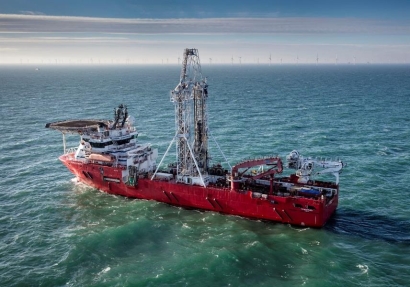
Fieldwork will run from May to September 2022, with the site located approximately 30 km off the coast of North Wales and North West England in an area known for its severe currents and challenging offshore environment.
Fugro will rely on their premium vessels, Fugro Synergy and the Normand Mermaid, to complete geotechnical investigations. These operations will also include the use of Fugro’s SEACALF® Mk V Deepdrive system for seabed cone penetration tests (CPTs), as well as the SEADEVIL® for vessel-based and seafloor downhole testing.
The use of this innovative equipment will ensure efficient operations and can reduce carbon emissions by up to 40 % when compared to traditional inspection methods. In addition to this, Fugro Synergy’s stable design ensures high weather operability and reduced downtime, whilst the focus on remote operations and the limited need for manual handling of equipment ensures improved operational safety.
Following the fieldwork, an extensive laboratory testing programme will be delivered by Fugro’s in-house laboratory engineers, allowing all samples to be analysed efficiently for foundation designs.
Dennis Koenen, Fugro’s Global Director Geo-data Acquisition Marine Site Characterization, said, “With access to in-house foundation experts and state-of-the-art assets, we’re able to deliver high-quality insights as early as possible in the design process. With this Geo-data, BP and EnBW will be able to effectively guide the planning, design and installation of the Morgan and Mona wind farms – critical assets to achieving sustainability targets and delivering green electricity to the region.”
These offshore wind developments will support the UK government’s target of producing sufficient offshore wind energy to power UK homes by the end of 2030.

